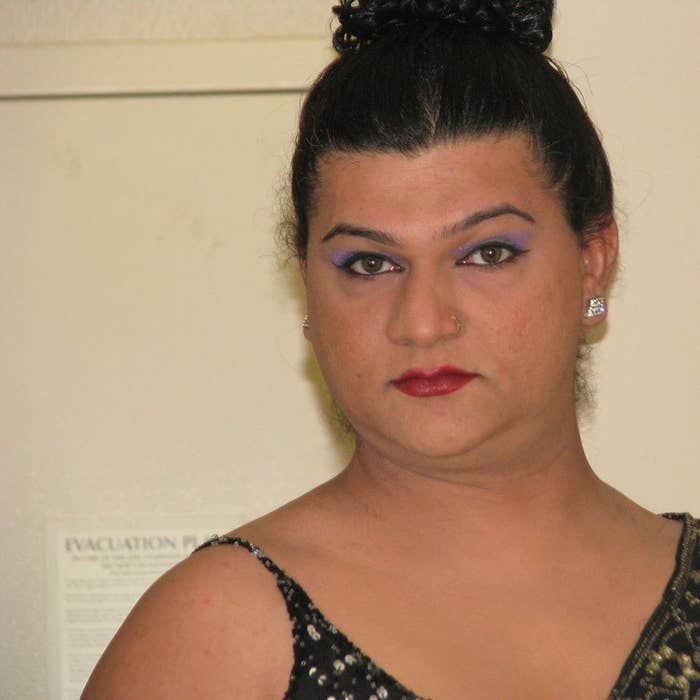
A victory for transgender rights in India's Supreme Court on Tuesday may have rescued the country's LGBTI movement from the brink of legal disaster.
For the past 12 years, the Indian LGBTI rights movement had pinned its hope to a challenge to the country's colonial-era sodomy law, known as Section 377. In December, a two-judge panel of the Supreme Court dealt the effort a crushing defeat, overturning a ruling by the Delhi High Court that had found broad protections for LGBTI rights under the country's constitution.
Tuesday's decision, though, could flip the dynamic for lawyers trying to get the Supreme Court to reconsider the ruling in a petition now under consideration. Before Tuesday's ruling, the Supreme Court basically would have to say that two of its judges committed a gross miscarriage of justice in order to overturn the sodomy law ruling, with very little foundation in Supreme Court jurisprudence. But with the new ruling on the table — which directly contradicted the sodomy ruling on several key points— it is instead being asked to reconcile two wildly divergent opinions of its own justices.
This doesn't make the petition lawyers have filed in the sodomy law case a slam dunk for LGBTI advocates, but it is a lot easier to make their argument with two judges of the court on their side. And it arrives just in time to factor into the decision on whether to consider the petition at all.
After the court upheld the sodomy law in December, the Indian legal system left lawyers two last-ditch ways to get the ruling overturned. The first, what's known as a review petition, was summarily dismissed by judges on January 28. Advocates are now awaiting to hear whether a new five-judge panel will consider the lawyers' curative petition, a filing used to challenge violations of fundamental rights. The court is expected to announce this week or next whether it will consider arguments for a curative petition.
The curative petition was a long-shot, since two of the judges involved in the review have also been involved in deciding against the case in its earlier stages. But the broad constitutional protections for transgender people — possibly including the right to relationships with sexual partners of their own choosing — recognized in Tuesday's ruling directly contradicts the 377 decision's narrow reading of the constitution.
The new ruling "opens the door for us to challenge 377 on the curative petition," said Anand Grover, the lead lawyer in the 377 case who also represented one of the petitioners in the trans rights case, in a phone interview from Delhi.
While the justices in Tuesday's ruling, K.S. Radhakrishnan and A.K. Sikri, said in their opinion that they "express no opinion on" the judgement reached by Justices G.S. Singhvi and Sudhansu Jyoti Mukhopadhaya in the 377 case, their argument reads almost like a point-by-point takedown of Singhvi's logic in his opinion upholding 377.
Singhvi rejected that 377 criminalized a class of people, instead asserting that it simply outlaws a behavior. Therefore, it cannot be held to violate the Indian constitution's guarantees to equal protection under the law, the right to privacy, the right to self-determination, or freedom of expression. In a passage that provoked particular outrage from LGBT-rights supporters, Singhvi wrote, "A miniscule fraction of the country's population constitute lesbians, gays, bisexuals or transgenders and in [the] last more than 150 years less than 200 persons have been prosecuted ... for committing offence under Section 377," too small a sample to argue that it violates the fundamental right of an entire group.
Radhakrishnan, on the other hand, wrote in the opinion on transgender rights, "Discrimination on the ground of sexual orientation or gender identity, therefore, impairs equality before law and equal protection of law." Additionally, he argued, "the Constitution states that all citizens shall have the right to freedom of speech and expression, which includes one's right to expression of his self-identified gender. Self-identified gender can be expressed through dress, words, action or behavior or any other form" — a definition so expansive that it could include sexual activity with a partner of their own choice.
In fact, Grover noted, Radhakrishnan's argument seemed to owe a lot to the very judgement against 377 that Singhvi's opinion overturned. The judges who decided the transgender rights case, Grover said, "have obviously gone very similar to the Delhi High Court judgement."
Despite the language in Radhakrishnan's ruling that it is not weighing in on the 377 case, today's ruling rebuts "it on no uncertain terms," said Arvind Narrain, a lawyer with the Alternative Law Forum in Bangalore who worked on the 377 litigation. Radhakrishnan and his colleague in today's ruling, Narrain said, "say 377 is responsible for torture and abusive treatment."
Simran Shaikh, an activist for the rights of hijras, one of India's historic transgender communities, said of the decision, "This is a ray of hope."
Shaikh, who works as program officer for the India HIV/AIDS Alliance, added, "Today is just a foundation stone" in securing LGBT rights. "[Now] we have to build the entire empire."
